Construction work starts on new Type 31 warships
- Published
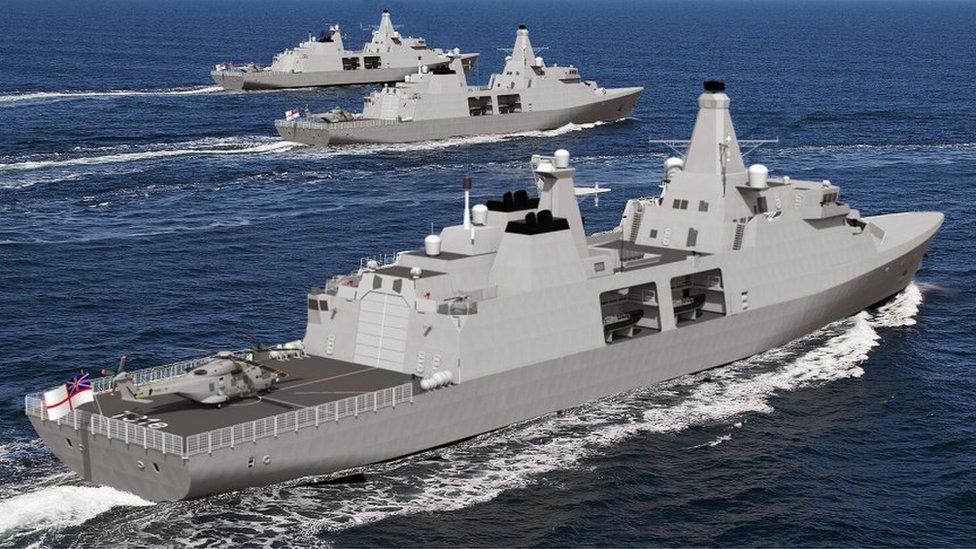
The new Type 31 will undertake a variety of operational roles for the Royal Navy
Work has officially started on a £1.25bn project to build five new warships for the Royal Navy.
UK Defence Secretary Ben Wallace cut the first steel for the first Type 31 frigate - HMS Venturer - due to be built by Babcock at Rosyth in Fife.
The fleet's construction will support about 1,250 highly skilled jobs at Babcock and lead to an additional 150 apprenticeships.
It is also expected to support a further 1,250 UK supply chain roles.
At £250m per vessel, the Type 31 is a smaller, cheaper frigate than the Type 26 warships currently being built at the Upper Clyde shipyards.
The Type 31 will undertake a variety of operational roles, including interception and disruption of illegal activity at sea, intelligence gathering and defence engagement.
They will replace the five general-purpose Type-23 frigates currently in service with the Royal Navy.

Ben Wallace said it was a "great milestone in the renaissance of British shipbuilding"
The Babcock team's Arrowhead 140 design beat competition from a Cammell Laird/BAE Systems consortium and a bid led by Atlas Elektronik UK to secure the build contract.
Mr Wallace described the steel-cutting event as a "great milestone in the renaissance of British shipbuilding".
He said: "Today is a momentous occasion for the Type 31 programme, defence and the shipbuilding industry in Scotland.
"As Shipbuilding Tsar, to cut the steel for the first of five new frigates that will be constructed here on our shores in the Firth of the Forth, providing jobs and innovation to the area, is a tremendous honour."
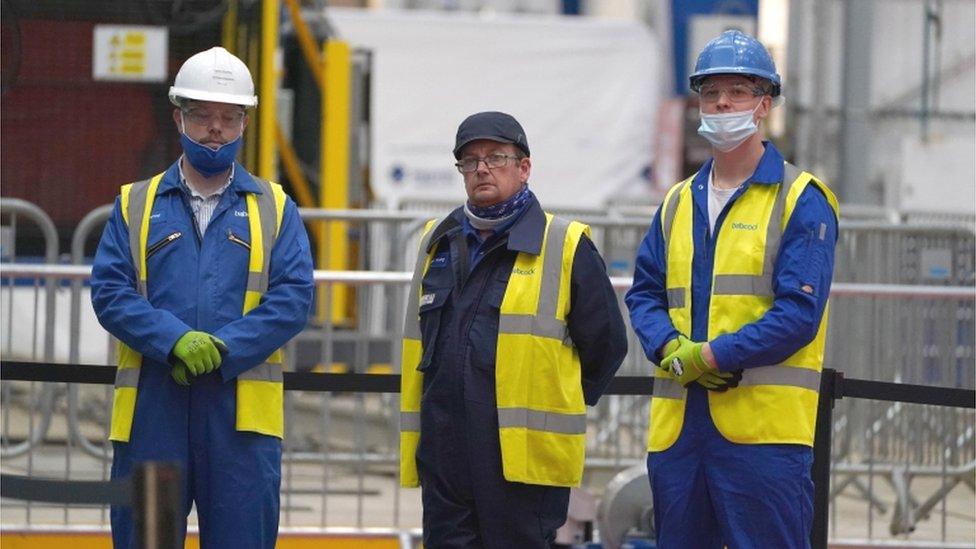
Babcock workers look on at the steel-cutting ceremony
The Type 31 will have advanced capabilities fitted onboard, including a supersonic anti-air missile defence system, as well as Bofors naval guns and a 4D radar system.
There will also be space to house a Royal Navy helicopter.
Known as the Inspiration class, the five Type 31 vessels all take their names from former warships and submarines whose missions and history are intended to inspire Royal Navy operations.
Second Sea Lord Vice Admiral Nick Hine said: "The Type 31 represents the very best of British shipbuilding, and with its modular design will be configurable to meet the needs of both the Royal Navy and our allies around the world, now and into the future."
The entire Type 31 fleet is expected to be delivered by the end of 2028 and to enter service with the Royal Navy by the end of 2030, with the first expected in the water in 2023.
The vessels will each carry a crew of up to 105 that will be deployed on duties around the world, working alongside new Type 26 frigates.


It's a lot cheaper, with a budget of no more than £250m per ship. It's lighter and carries less sophisticated weaponry than the Type 26 being built on the Clyde.
The hull design was based on one developed for the Danish navy. And in turn, the design is being exported by Babcock to spread the cost of development. Indonesia is the first country to sign up for two ships, to be built by one of its own shipyards.
The choice of Rosyth followed a convoluted process of procurement - reversing a decision that would have put all the Royal Navy's fighting ship orders into Clyde yards, and trying to get more competition between private shipbuilders.
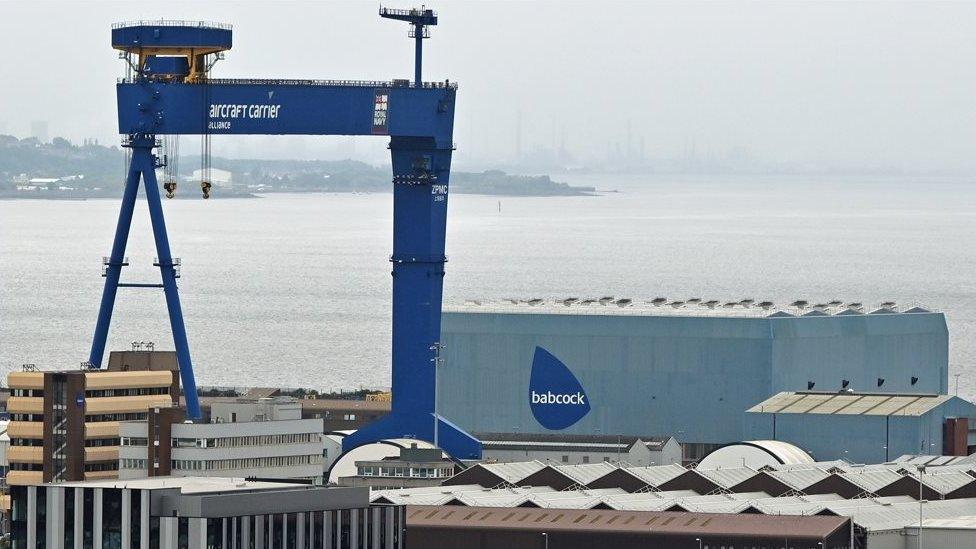
Babcock was awarded the frigate contract after a competition between rival consortia
Babcock beat Merseyside's Cammell Laird (working with BAE Systems on the Clyde) in the final run-off. It has since invested in an assembly hall with robotic welding, that should make it a formidable rival to the Clyde yards for orders beyond the Types 26 and 31.
The impression was given, with the new shipbuilding strategy, that the Type 31 would benefit yards all over the UK, using modular design in the same way the aircraft carriers were built.
The Babcock bid initially included Ferguson Marine in Inverclyde and Harland and Wolff in Belfast, but both fell out of that consortium when they got into financial difficulties.
It's looking a lot less like a UK-wide shipbuilding strategy now. The construction of the five Type 31 hulls will be in Fife. Much of the value will be in the supply chain for weapons, engines and systems. But Babcock's pricing is based on doing the shipbuilding itself.
- Published12 September 2019

- Published10 December 2018

- Published18 October 2017
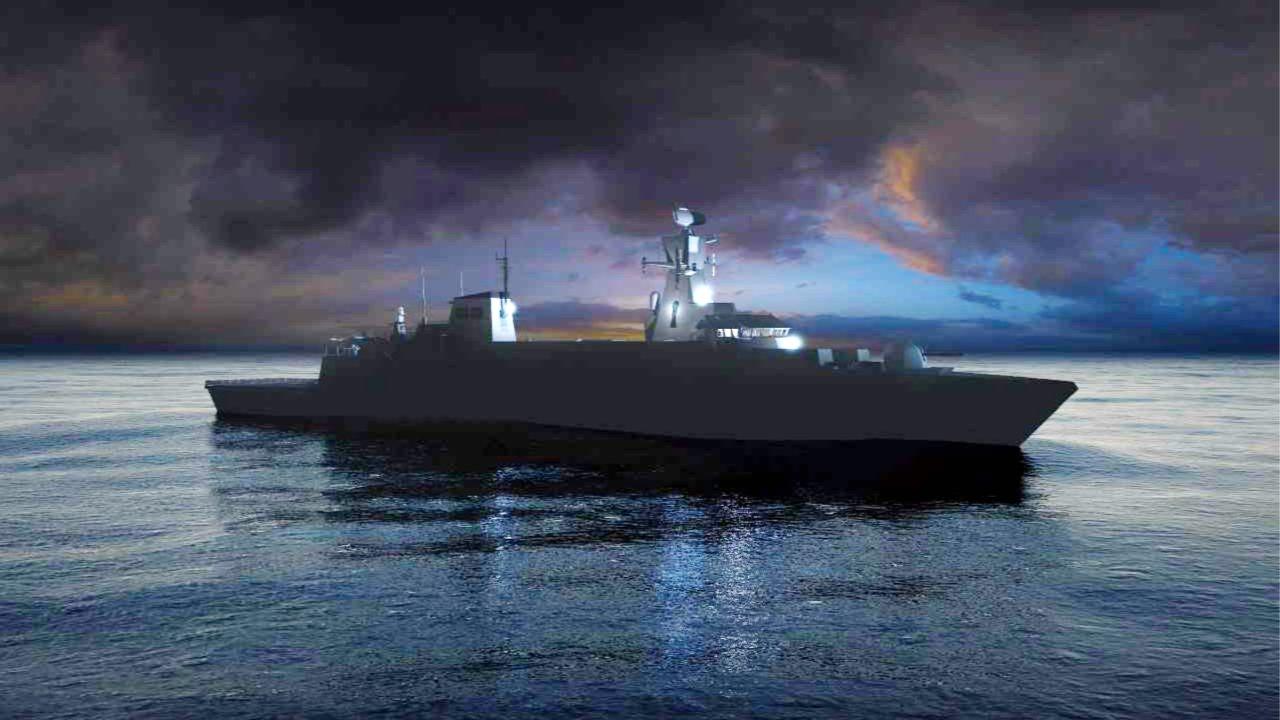
- Published6 September 2017
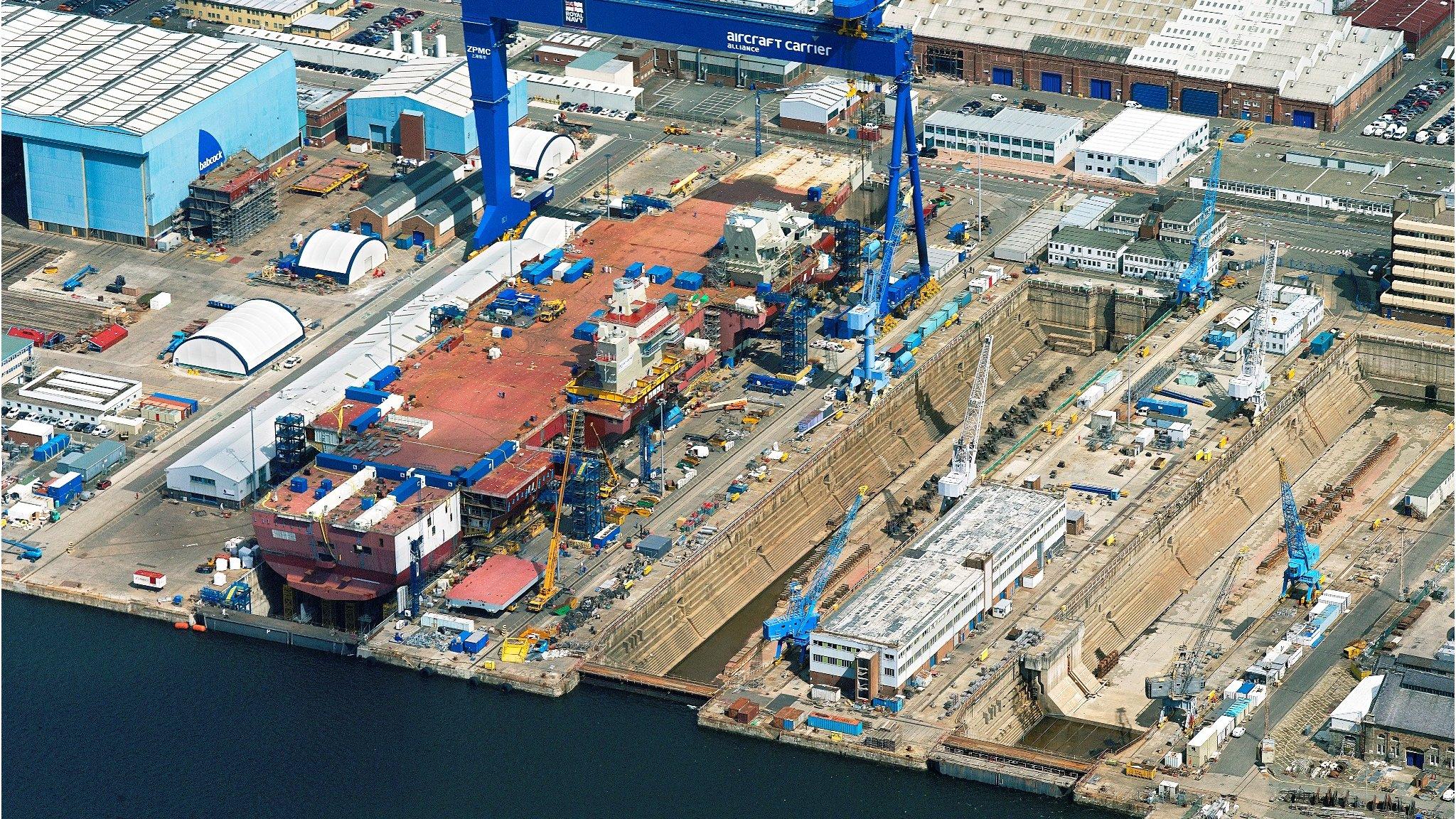
- Published6 September 2017

- Published29 November 2016